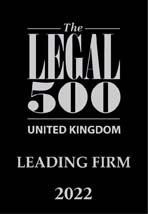A company registration document contains a company’s vital information, including: the company’s full name, the company’s unique registration number, the date of incorporation and the Registrar’s seal.
Company formation documents are critical documents that are issued following the successful registration of a new limited liability company. You must keep these important documents on file, ideally at your registered office address, as they will be referred to throughout the life of your business. There are three company formation documents in total: the certificate of incorporation, the memorandum of association, and the articles of association.
In this article, company registration document UK, we take a look at these issues in more depth.
Please click here to find out more about our corporate services
Free Initial Telephone Discussion
For a free initial discussion with a member of our New Enquiries Team, get in touch with us today. We are experienced in dealing with all the legal aspects company registrations and formations, and once instructed, we will review your situation and discuss the options open to you in a clear and approachable manner. Early expert legal assistance can help ensure you are on the best possible footing from the start and also avoid the stress of dealing with these issues on your own. Simply call us on 0345 901 0445 or click here to make a free enquiry and a member of the team will get back to you.
What are the steps in registering a company?
- Decide upon the company structure.
When most entrepreneurs register a business in the United Kingdom, they choose what is known as a ‘private company limited by shares’.
This corporate structure can be an effective method of tax planning. For example, as a corporate director, you can deduct a portion of your income from company dividends, resulting in lower income tax.
Another advantage is that your personal assets – such as your home and car – will not be jeopardised if the business runs into financial difficulties. This is what the term ‘limited liability’ means.
- Register the name of your new company.
Check that somebody else hasn’t already registered it. Your company name can be pretty much anything you want it to be but it may be beneficial to choose a name that is short, memorable and pertinent to the industry you are operating within.
- Provide details of your Business’s Information.
When you register a business in the United Kingdom, much of the information you supply will be made public. Companies House will require information about the following:
Companies House and HMRC will send correspondence to the registered office. It must be located in the United Kingdom and be accessible to the company’s directors.
Directors of the corporation – your business must have at least one director. Companies House will require their full name, birth date, and residential address.
Shareholders – every business must have at least one shareholder; however, the shareholder and director can be the same individual. Companies House will require their full name, birth date, and residential address.
If you do not have a separate location for your business, you should register a UK company using your home address. However, if you are concerned about your home address becoming public, there are companies that will allow you to use their address.
- Allocate shares in the company
When you register a company in the UK, you’ll need to allocate shares to your shareholder(s). The simplest way is to allocate one share to each shareholder, and make each individual share worth £1.
- Complete the memorandum and articles of association
These documents formalise how your company will be run. They need to be agreed on and signed by the company director(s), shareholder(s) and secretary before you register a UK limited company.
The Memorandum of Association
Companies House creates the memorandum of association during the company registration process and attaches it to the articles of association. After incorporation, the memorandum becomes a historical document that contains the names of the company’s founding members (referred to as ‘subscribers’). This document should be kept in the same location as the company’s records.
The memorandum indicates that the subscribers agree to incorporate a company under the Companies Act 2006 and to become members of that company either by purchasing at least one share (if the company is limited by shares) or by ‘guaranteeing’ at least a nominal sum (if the company is limited by guarantee).
The Articles of Association
All limited companies must have a set of articles of association, which serve as the company’s constitutional ‘rule book.’ The articles are submitted to Companies House along with the registration application, and should then be safely stored at the registered office of the business.
The majority of businesses make use of ‘model articles.’ This is the version by default required under the Companies Act 2006. However, it is possible to modify the standard model articles to meet your company’s specific requirements. Alternatively, you might construct a collection of articles that is entirely unique.
If you employ a company formation agent to incorporate your limited company, you will very likely be given the option of adopting the agent’s ‘model articles’ or uploading your own bespoke articles with your application to establish a new business.
The Certificate of Incorporation
When a business is incorporated, it establishes itself as a distinct legal entity from its members (shareholders/guarantors). The company’s information is entered into the public register of companies, which is kept by Companies House and made publicly accessible online.
Additionally, Companies House will issue a certificate of incorporation that contains basic information about the business, such as its registered name, incorporation date, and company registration number (CRN).
This certificate establishes the existence of the company and its incorporation in accordance with the Companies Act 2006. You will need to refer to it and give a copy on ay number of occasions, including when opening a business bank account, applying for business loans or grants, and creating trade accounts.
Who is eligible to incorporate a company?
By submitting their names to a memorandum of association, one or more persons can form a business for any lawful purpose. In law, the term ‘person’ refers to individuals, corporations, and other legal entities. By signing the memorandum, subscribers acknowledge their intent to form a corporation. Under the age of 16, a child lacks the legal competence to engage into a contract. Generally, if the registrar is aware that the subscribers are under the age of 16, they will deny the application for incorporation.
Where do I obtain the required company formation documents?
When you register your business with a company formation agent, they will send you a copy of your memorandum, articles of association, and certificate of incorporation. These documents may be provided in digital format through email or in hardcopy format via postal mail. It is entirely dependent on the company creation bundle you purchased.
If you register your business directly with Companies House, you will immediately receive an automatic email including a digital copy of your certificate of incorporation.
How we can help
We have a proven track-record of helping clients with company registrations. We will guide you through the process and ensure all checks are carried out swiftly and efficiently and we firmly believe that with the right solicitors by your side, the entire process will seem more manageable and far less daunting.
How to Contact our Corporate Solicitors
It is important for you to be well informed about the issues and obstacles you are facing. However, expert legal support is crucial in terms of saving you money and ensuring you achieve a positive outcome.
To speak to a member of our new enquiries team today, simply call us on 0345 901 0445 or click here to make a free enquiry . We are well known across the country and can assist wherever you are based. We also have offices based in Cheshire and London.
Disclaimer: This article provides general information only and does not constitute legal advice on any individual circumstances.



